Have you ever wondered exactly how to eat a cherimoya?
Mark Twain said, "The Cherimoya is the most delicious fruit known to men.” And with good reason! It's a creamy, delicious, unique fruit that's wonderful to enjoy in the spring.
I’ll show you the best way to enjoy a delicious, custardy cherimoya, as well as answer commonly asked questions about this flavorful fruit!
Jump to:
What is a cherimoya?
Cherimoya fruit (also called chirimoya) is a custardy, heart-shaped fruit with greenish skin and creamy, white flesh.
They’re a tropical fruit that grows on cherimoya trees (Annona Cherimola) and are native to Central and South America but can grow in many tropical and subtropical regions.
In the US, they are often grown in Florida, southern California, and Hawaii.
Cherimoyas look a little like small dragon eggs with the patterned overlapping “scales” on their skin. They usually weigh about ½ to 1 pound, although they can grow as large as 6 pounds!
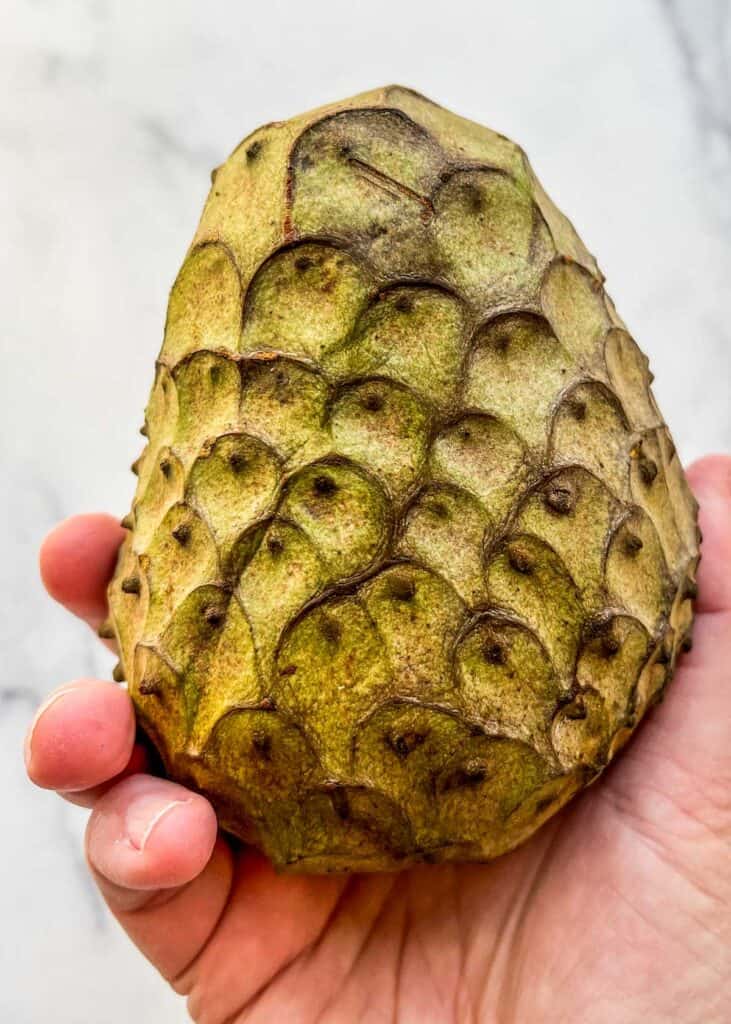
How to Eat a Cherimoya
First, make sure your cherimoya is ripe (see below).
Remove the stem if it has one, and place the cherimoya on a cutting board. Then, cut the cherimoya in half with a paring knife. I find cutting the easiest way to break it in half, but you can also pull it apart by pressing your thumbs in the base and pulling the sides back till it splits.
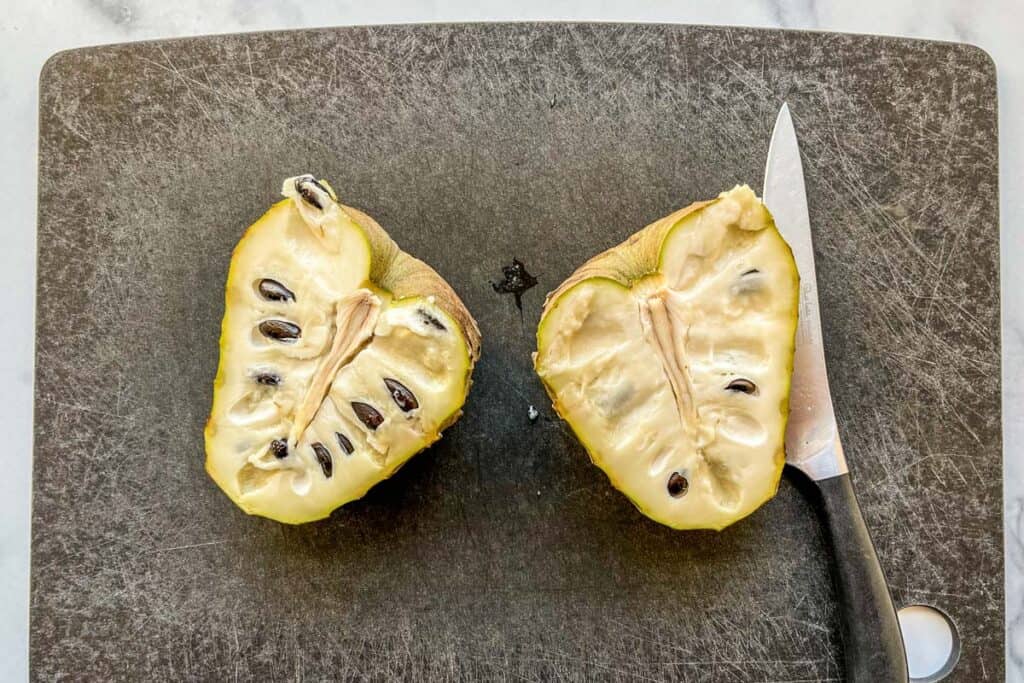
Using a spoon, scoop out the sweet flesh and pop it in your mouth. Spit out any seeds without biting them (as they are toxic). Alternatively, you can scoop out the large seeds and discard them before eating the fruit flesh.
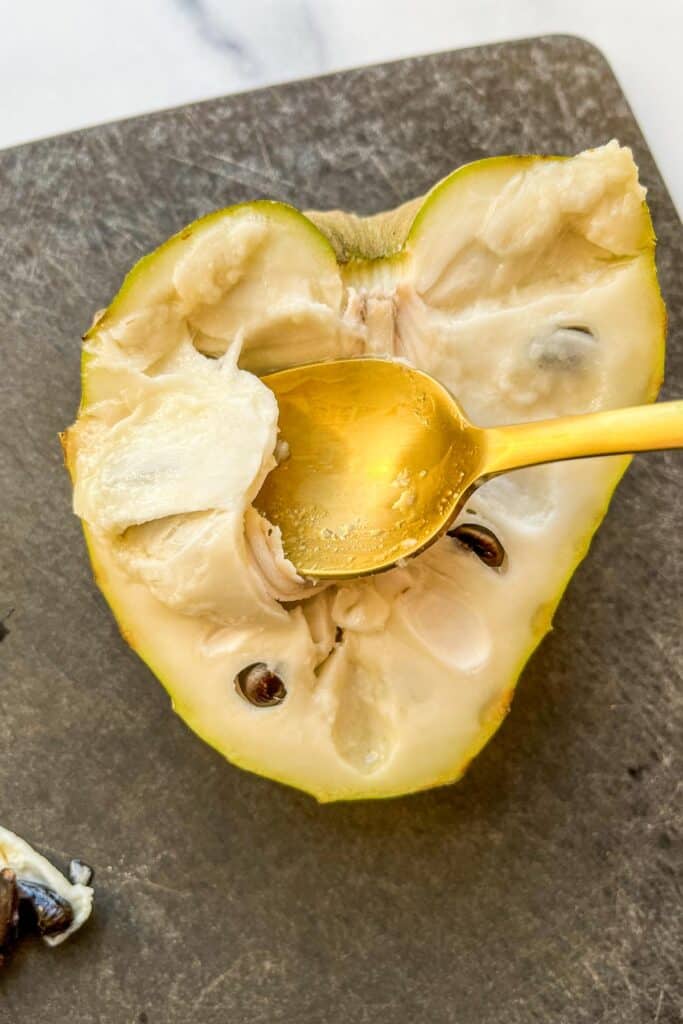
Continue to scoop out and eat the creamy flesh until you reach the skin.
How to tell when a cherimoya is ripe?
Slightly squeeze it, and it will feel soft (like a ripe mango). If the cherimoya is hard, it’s not ready to eat.
A ripe cherimoya might also have a cracked open stem (the juice might already be coming out a bit).
When it's ripe, the greenish skin should have some darker brown areas. If the cherimoya's skin is bright green and shiny, it's not yet ripe.
If your cherimoya isn't yet ripe, leave it at room temperature until it's softened a bit and the skin is no longer bright green.
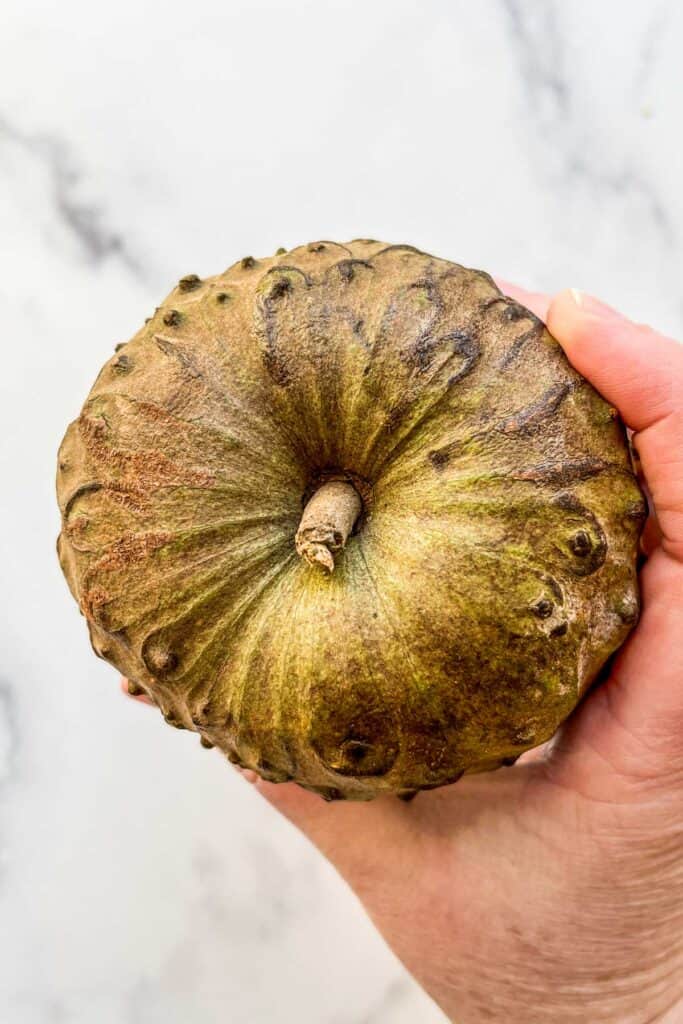
What to eat with Cherimoya
The sweet flavor of the cherimoya can be enjoyed on it's own, and that's my recommendation. It's a sweet treat all by itself.
You can also make a cherimoya smoothie or add to pies, cakes, ice cream, puddings, or drink recipes, like cocktails and juices.
More Cherimoya FAQs
What does a cherimoya taste like?
A cherimoya tastes like a custardy pear with a blend of pineapple, mango, and coconut flavors.
It's a creamy fruit that's juicy with whitish flesh and large black seeds (that should not be eaten) inside. The creamy texture of the center of the fresh fruit often lends to its nickname of the ice cream fruit.
Is the skin of the cherimoya edible?
The skin of a cherimoya is bitter and should not be eaten. You can peel it off or scoop the flesh out of the skin with a spoon.
Where to buy cherimoyas?
You may be lucky enough to have cherimoyas at your local grocery store during their season. Cherimoya fruit is in season from January to June in Central and South America, but in the US, it can usually be found between March and May.
Farmers' markets will sometimes have them if your grocery stores don't.
Cherimoya is so rare (and expensive) because each tree produces little fruit, and it has to be hand-pollinated, making it an extremely labor-intensive fruit.
Can you eat raw cherimoya?
Yes, you can eat raw cherimoya! Cherimoya can be used in baked goods and desserts, but it's delicious raw. Just don't eat the poisonous seeds.
What part of a cherimoya do you eat?
You eat the fleshy, white inside part of the cherimoya. Avoid eating the seeds and the skin.
What are the health benefits of cherimoya?
Cherimoya is not only delicious but contains antioxidants like vitamin C and lutein. One cherimoya also contains about 17% of your daily value of fiber.
How poisonous is a cherimoya seed?
Cherimoya seeds contain a resin that causes nausea, vomiting, and other uncomfortable symptoms. It's especially toxic when the seeds are crushed.
Be careful not to ingest any or bite down on any of the seeds, as the toxin has also been shown to impact the nervous system.
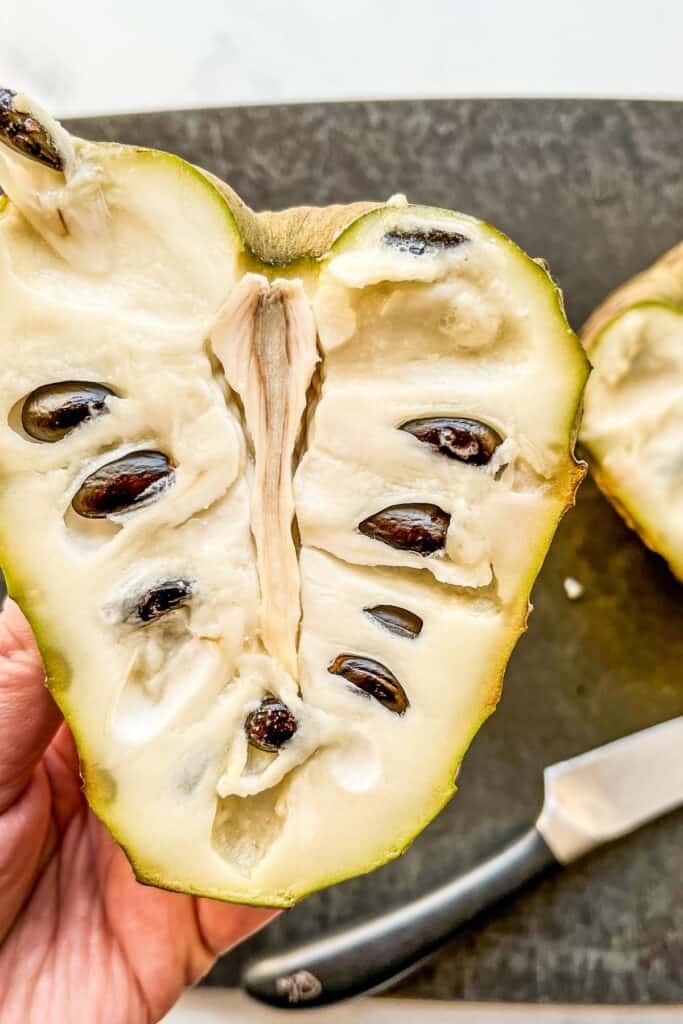
More Helpful Fruit Guides
If you're interested in learning about more unique, less common fruits and how to eat them, check out these guides:
If you try eating a cherimoya, let us know! Connect with us on Instagram and share your photos, or leave us a rating.
How to Eat a Cherimoya
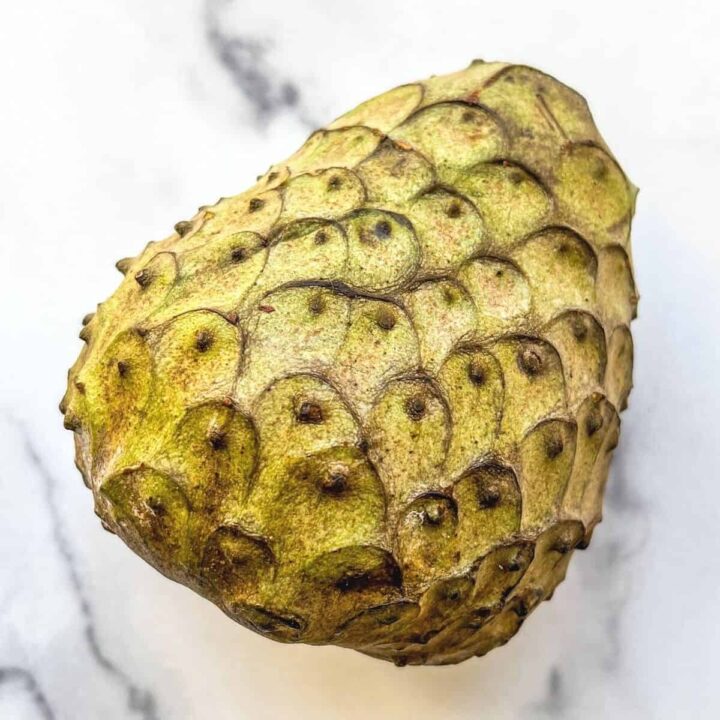
Cherimoya is a delicious, custardy fruit. It has fantastic flavors, but can be confusing if you've never eaten it before. Here's how to easily open and enjoy a cherimoya fruit.
Ingredients
- 1 ripe cherimoya*
- Cutting board
- Knife
- Spoon
Instructions
- Remove the stem from the cherimoya if it has one.
- Cut the cherimoya in half with the knife on the cutting board. Or pull it apart by pressing your thumbs in the base and pulling the sides back till it splits.
- Using a spoon, scoop the flesh out and pop it in your mouth. Spit out any seeds, without biting them (as they are toxic).
- Continue to scoop out the flesh until you reach the skin.
Notes
*A ripe cherimoya will have greenish-brownish skin and be easy to squeeze (like a ripe mango). If it feels hard, it's not ready to eat.
Nutrition Information:
Yield:
2Serving Size:
1Amount Per Serving: Calories: 88Total Fat: 1gSaturated Fat: 0gTrans Fat: 0gUnsaturated Fat: 0gCholesterol: 0mgSodium: 8mgCarbohydrates: 21gFiber: 4gSugar: 15gProtein: 2g